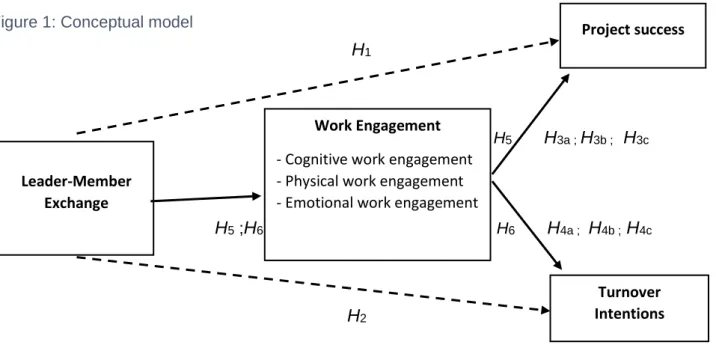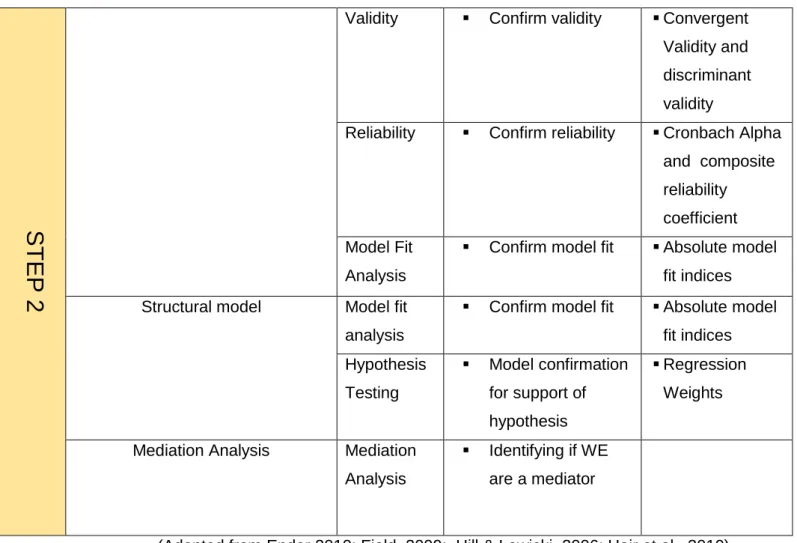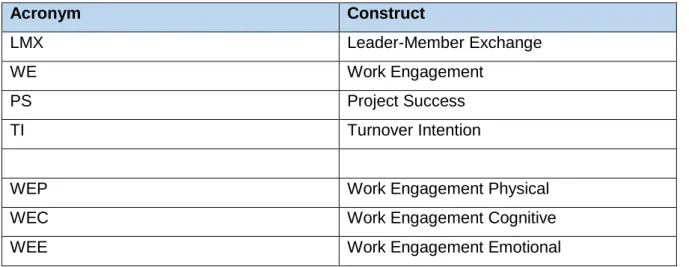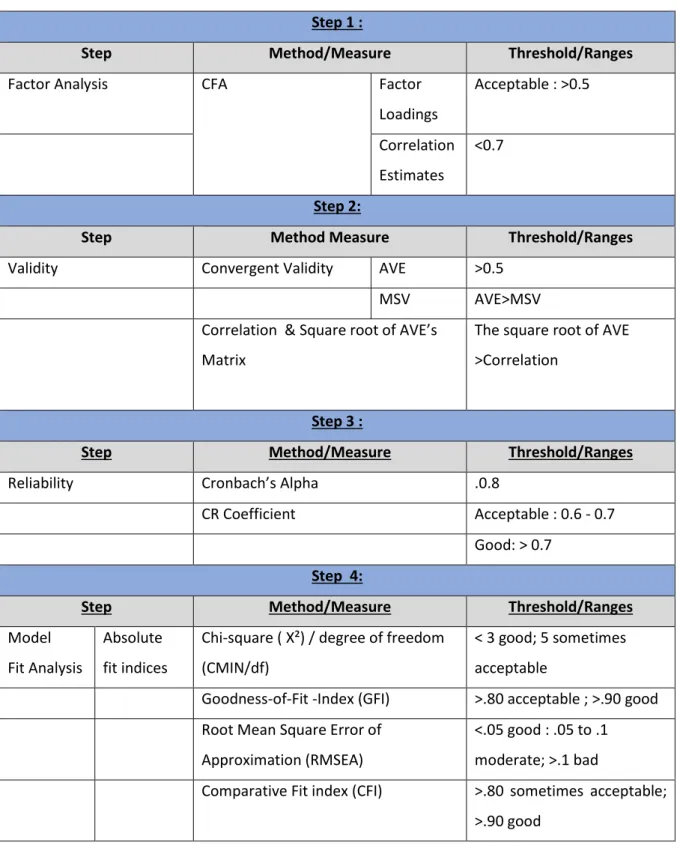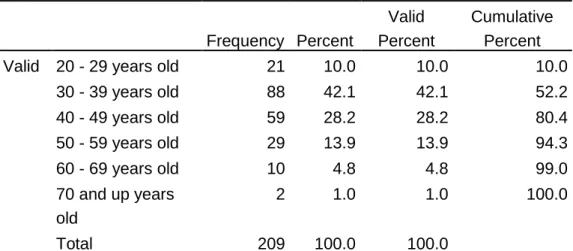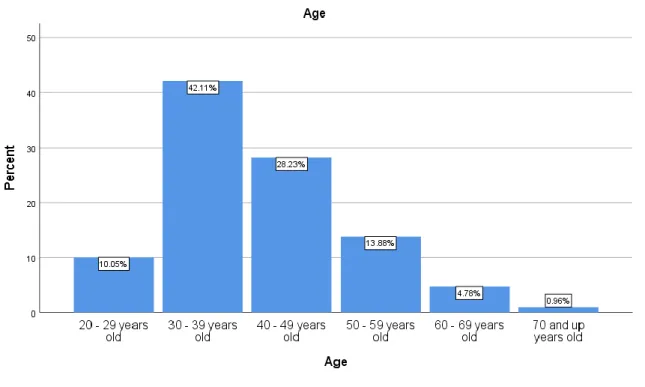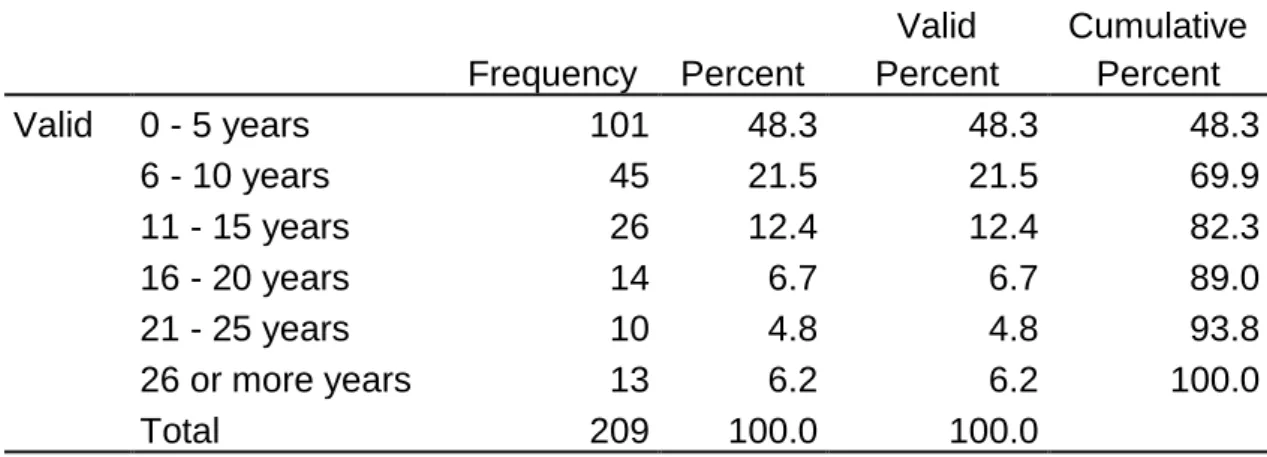Work engagement was also identified as a mediator in the relationship between LMX and project success and the relationship between LMX and turnover intention. The study examined the relationship between managers and project managers involved in the construction industry, which ultimately influence project outcomes.
RESEARCH TITLE
INTRODUCTION TO THE PROBLEM
It is particularly prevalent in the South African construction industry where there is a massive skills shortage (Windapo, 2015). This research project is limited to project managers working for companies that have an interest in the South African construction industry.
RESEARCH PROBLEM
The third chapter defines the research questions derived from the existing literature, and the fourth chapter focuses on the proposed research methodology and design. These outcomes are essential for the sustainability of businesses operating in the construction industry.
RESEARCH PURPOSE
THEORETICAL UNDERPINNING
The Construction Industry
According to Zafar et al. 2012), characteristics of the construction industry are deadlines, time pressure and high levels of workload. These high levels of stress are often the result of construction industry job demands such as multitasking.
Project Management
16 | P a g in only one task on only one project, and many of the tasks have interrelated dependencies, making the professional work itself as complex as the projects on which it is performed” (Bowen et al., 2013). Blaskovics (2016) further indicates that it is essential for a company's management to be aware of the engagement and job satisfaction of their project managers as this can affect the outcome of projects and ultimately the success of the company.
LMX Theory
Kahn (1990) has suggested that the self-perception of the employee is more important in the LMX relationship than that of the leader. Therefore, it can be concluded that because of the LMX relationship an employee has with his or her leader, the employee is likely to expand or contract his role.
Work Engagement
The Utrecht Work Engagement Scale has been identified as a validated measure of work engagement (Knight et al., 2017). Other factors influencing work engagement have been identified as interpersonal trust, organizational trust-building competence and motivation (Chrupala-Pniak et al., 2017).
LMX and Work engagement
High-quality levels of LMX relationship not only lead to the work engagement of employees, but also indirectly influence the organization in general. Matta et al., (2015) draw on previous literature to argue that an employee's work engagement will either increase or decrease depending on the type of LMX relationship that exists between a leader and that employee.
Project Success
Literature also indicates that project success can be achieved even if the project was not effectively managed. Albert et al., (2017) take the view that project success is only achieved when a project is executed in terms of time, budget and performance.
Project Success and Project Management
27 | Page leaders, who are responsible for project results (Shenhar et al., 2001) A key consideration of project success is whether the project met the expectations of the stakeholders. This definition and view leads the researcher to agree with the view of Shenhar et al.,(2010) that project success can be considered a strategic management concept.
Leader-member exchange and project success
It is clear that the attitudes of those involved in projects and their characteristics and management styles are essential factors in achieving project success (Blaskovics, 2016; Maqbool, Sudong, Manzoor, & Rashid, 2017; Rezvani et al., 2016). Therefore, management should be aware of job satisfaction, and the trust of their project managers, as both of these can lead to a higher chance of project success in complex project situations (Rezvani et al., 2016).
Work engagement and project success
It seems inevitable that project managers have a great influence on projects and a key role in achieving project success” (Blaskovics, 2016, p. 278). It has been found that there are direct relationships between “human factors, managerial actions and related success attributes” (p. 1137) in relation to project success (Zafar, Tabish, & Jha, 2012).
Turnover Intention
30 | P a g e supervisory coaching, performance feedback and timer control”(p.2) can lead to a reduction of employees' turnover intentions. Literature provides evidence that manager-employee relationships lead to higher levels of an employee's sense of organizational citizenship and this affects staff turnover intention (Kumar & Singh, 2012).
Turnover Intentions and Leader-Member Exchange
Research provides evidence that the relationship between managers and employees leads to higher levels of an employee's sense of belonging to the organization and this affects the turnover intention of staff (Kumar . & Singh, 2012). Literature also provides evidence that the quality of LMX relationship does influence the job performance of staff, which further supports the inference that it does have a positive impact on the engagement of staff (Henson, 2015).
Turnover Intentions and Work Engagement
The literature shows that the more disengaged an employee is from their job, the more disengaged an employee is from their job. Increasing levels of job satisfaction leads to a decrease in the chances that an employee is likely to leave the job, and therefore management should be aware of the job satisfaction and trust of their project managers as both of these may result in a higher chance. of project success in complicated project situations and a reduction in staff turnover (Rezvani et al., 2016).
Conceptual Model
To gain an understanding of the relationships between the three subscales of work engagement (cognitive work engagement, emotional work engagement, and physical work engagement) and the dependent variables project success and turnover intentions. To gain an understanding of relationships where leader-member exchange and work engagement are predictors of project success and turnover intentions.
HYPOTHESIS ONE
The study aimed to gain an understanding of the relationships that exist between the independent variable leader-member exchange, and the dependent variables project success and turnover intention. LMX is hypothesized to have an impact on projects' success and the turnover intentions of construction project managers.
HYPOTHESIS TWO
HYPOTHESIS THREE (a)
HYPOTHESIS THREE (b)
HYPOTHESIS THREE (c)
HYPOTHESIS FOUR (a)
HYPOTHESIS FOUR (b)
HYPOTHESIS FOUR (c)
HYPOTHESIS FIVE
HYPOTHESIS SIX
Chapter four discusses the methodology used in data collection, data cleaning and data analyzes to test the hypothesis as stated in chapter three. The chapter provides an overview of the research design, population, sample, survey instrument and research limitations.
RESEARCH DESIGN
When using the deductive approach, the researcher develops a theory, hypothesis, and a strategy to test the hypotheses. Following a survey strategy also empowered the researcher to have more control over the research process.
POPULATION
42 | Page The researcher wanted his research to reflect a "snapshot" in time, as the time allowed for the research was limited. Structural equation modeling (SEM) was used as the analysis technique was dependent in nature and the method allowed the researcher to predict or explain one or more dependent variables (Zikmund et al., 2010).
UNIT OF ANALYSIS
SAMPLING METHOD AND SIZE
MEASUREMENT INSTRUMENT
44 | Page identified for the study have been used extensively in the past and that the scale has been shown to be valid and reliable ways of measuring constructs. The researcher used a six-point Likert scale ranging from one (strongly disagree) to six (strongly agree).
DATA GATHERING PROCESS
Research Method and Questionnaire Design
For the research to be measurable, it was essential that the questionnaire focused on the indicators of the concepts under investigation (Onen, 2016). Getting the support of the initial project manager makes it easier to access other project managers and increases the sample size.
Control variables
Independent, Dependent & Mediator Variables (Constructs)
Work engagement was measured using the 16-item Work Engagement Scale (Rich et al., 2010). The internal consistency validity between the three dimensions of the scale was between 0.89 and 0.94. The internal consistency validity of the scale was reported to be between 0.638. A sample question from the scale is “I will probably look at another company next year”.
ANALYSIS APPROACH
- The Analysis Process
- Data preparation - screening and editing of the data
- Outliers
- Testing for Normality: Skewness and Kurtosis
- Descriptive Statistics
- Homoscedasticity
- Linearity
- Multicollinearity
- Exploratory Factor analysis
- Kaiser- Meyer- Olkin (KMO) and Bartlett’s Test of Sphericity
- Commonalities
- Structural Equation Modelling
- Factoring Extraction and analysis
- Validity
- Convergent Validity
- SEM Measurement Model
- SEM - Structural Model
- Common Method Bias: Incorporating Latent Variables
- Model fit analysis
- Mediation analysis
- Linear regression
The results of the measurement model fit and the structural model fit are discussed in chapter five. The CFA was concerned with determining the number of factors that 'confirmed' the predetermined theory.
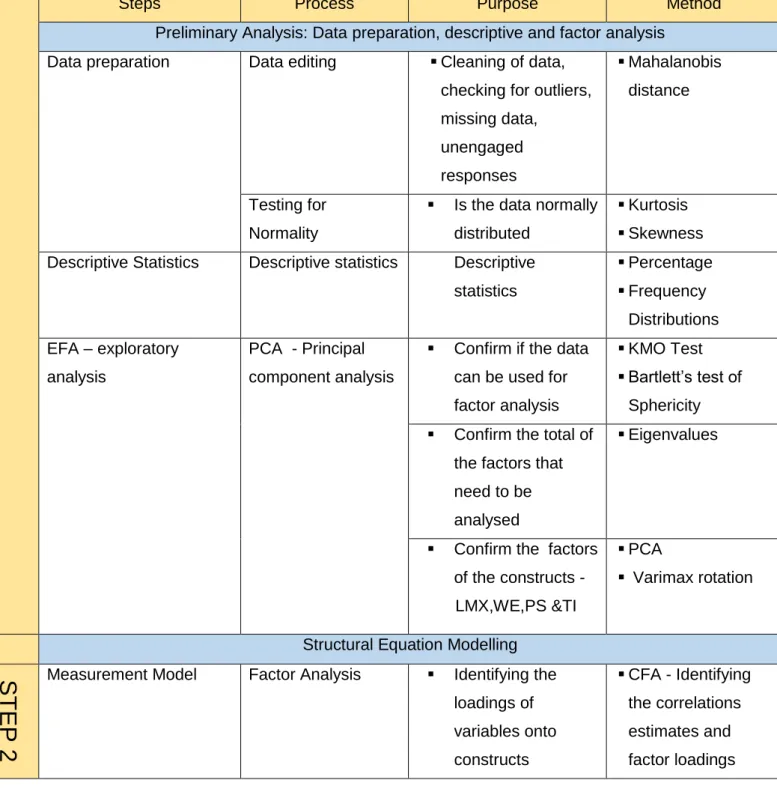
LIMITATIONS
These steps are editing data, encoding data, and analyzing the data. When data is captured it is often referred to as dirty and hence data cleaning was required in preparing the data for the analysis process.
PRELIMINARY ANALYSIS
Data Editing
Wegner (2016) states that data is the lifeblood of any statistical analysis and therefore, the data that was used had to be relevant, clean and in the right format. First, the data was checked for any outliers, and second, the data was checked for typographical errors.
Normality Testing
Descriptive Statistics
Biographical Data
Control Variables
Exploratory Factor Analysis
The Kaiser-Meyer-Olkin (KMO) and Bartlett's test of sphericity results are shown below in Table 11 below. The data in the table below are suitable for factor analysis since the KMO value is greater than 0.6 and Bartlett's test is significant (Pallant, 2001).
Exploratory Factor Analysis
The researcher chose to use the eigenvalues for the six factors as these were satisfactory. Since this is a new model, the validity and reliability of the model needed to be checked.
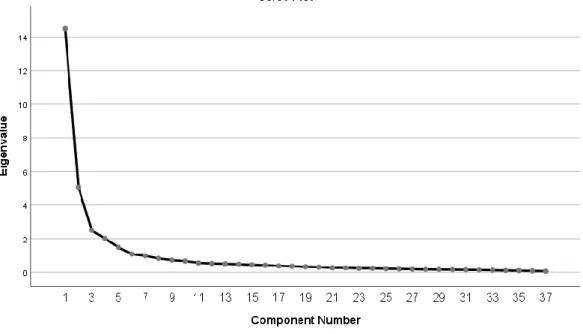
Structural Equation Modelling
86 | The use of multiple indices also provided the researcher with an increased level of sufficient evidence that the model fit was achieved. Hooper, Coughlan and Mullen (2008) citing McDonald and Ho (2002) described absolute model fit indices as measures "to determine how well an a priori model fits the sample data and demonstrate which proposed model has a better fit" (p.54 ).

Structural Model
From the fit indices, the researcher concluded that the structural model fits the data sufficiently and that the structural model can therefore be used for the hypothesis analysis.
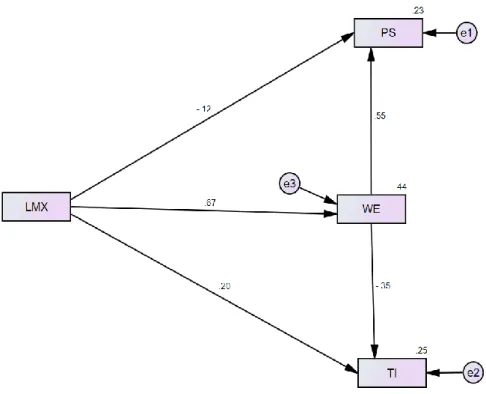
Mediation Analysis
This result from the mediation analysis indicates that, at a 95% confidence level, the WE mediates the relationship between LMX and PS. This result from the mediation analysis indicates that, at a 95% confidence level, the WE mediates the relationship between LMX and TI.
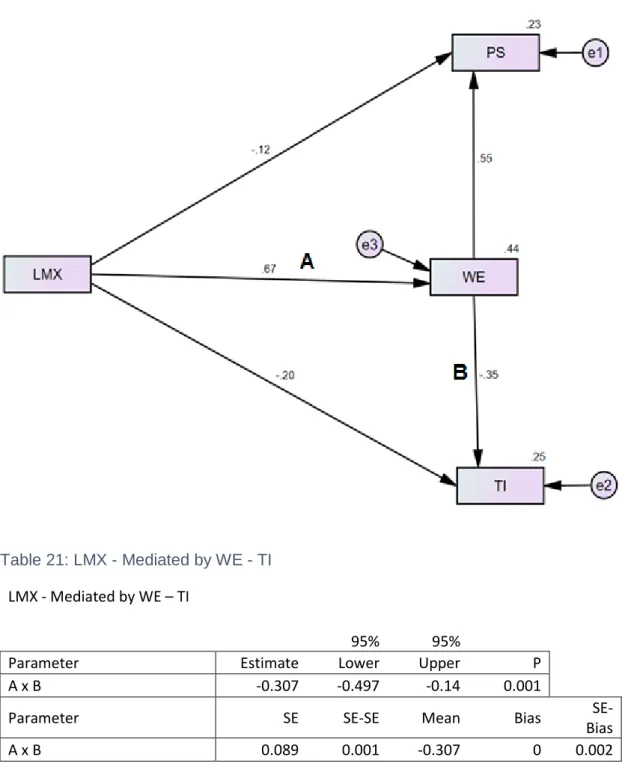
Hypothesis Testing
The result showed that partial mediation is taking place, as the value falls between the parameters - 0.2 and - 0.8 for partial mediation. Partial mediation occurs when the mediator variable partially explains the relationship between the exogenous and endogenous constructs” (Hair et al. 2017, p. 316).
Homoscedasticity
Linearity
Multicollinearity
Hypothesis Testing
Linear regression analysis further revealed that there is a moderate positive correlation between leader-member exchange and project success, as seen in the results in Table 22 below. Linear regression analysis further revealed that there is a moderate negative correlation between executive member turnover and turnover intention as seen in the results in Table 23 below.
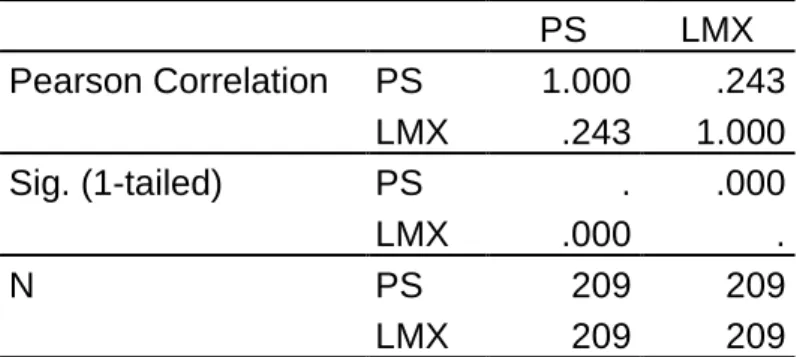
Hypothesis three
Linear regression analysis further showed that there is a strong correlation between emotional work commitment and project success as can be seen from the results in table 24 above. Hypothesis zero six (H60): - There is no significant relationship between leader-member exchange, work engagement and turnover intention.
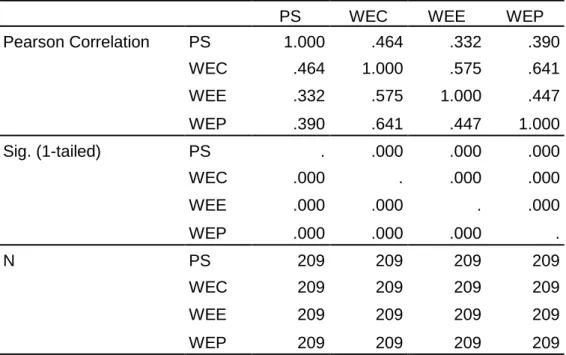
DESCRIPTIVE STATISTICS
The structure of the chapter is set out around the research objectives identified earlier, and comparisons are made between the findings and the literature reviewed in Chapter two. The small number of women may be indicative of several possible things such as the possibility that women tend to avoid pursuing a career as construction project managers, women may not be as willing to complete online surveys as their male counterparts, and that construction project management is primarily a male-dominated industry.
OVERVIEW OF CONSTRUCTS
Work Engagement
Cognitive work engagement was measured using five questions, emotional work engagement was measured using six questions, and physical was measured using five questions. The Cronbach Alpha score for work engagement was 0.920 which compares to the Cronbach Alpha range of 0.890 to 0.940 described by Rich, Lepine and Crawford (2010) in their work engagement study.
Project Success
110 | P a g e The three different constructs were measured using a scale previously used by Rich et al. The mean score showed an average percentage of response that was close to "somewhat agree", and therefore it can be suggested that there is a moderate level of work engagement in the sample.
Turnover Intentions
RESEARCH HYPOTHESIS DISCUSSION
- Hypothesis one
- Hypothesis Two
- Hypothesis three (a)
- Hypothesis three (b)
- Hypothesis three (c)
- Hypothesis three conclusion
- Hypothesis four (a)
- Hypothesis four (b)
- Hypothesis four (c)
- Hypothesis four conclusion
- Hypothesis five
- Hypothesis six
Alternative null hypothesis five (H51): - A significant relationship exists between leader-member exchange, work engagement and project success. Null hypothesis six (H60): - No significant relationship exists between leader-member exchange, work engagement and project success.
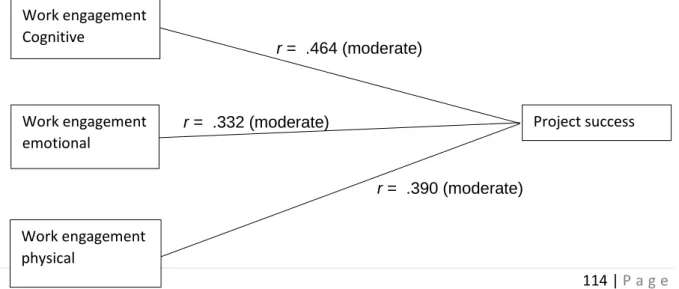
Research Objectives
RESEARCH OBJECTIVE ONE
- Leader-Member Exchange and Project Success
- Results from the data analysis
- Leader-Member Exchange and Turnover Intention
- Results from the data analysis
In the connection between LMX and TI, LMX accounts for 18.7% of the variance in TI.
RESEARCH OBJECTIVE TWO
- Work engagement subscales and project success
- Results from the data analysis
- Work engagement subscales and turnover intention
- Results from the data analysis
- Leader-member exchange, work engagement and project success
In the connection between WE (subscales) and PS, WE (subscales) accounts for 23.4% of the variance in PS. In the connection between WE (subscales) and TI, WE (subscales) accounts for 26.7% of the variance in TI.
RESEARCH OBJECTIVE THREE
Results from the data analysis
Therefore, increased level of leader-member exchange and work involvement leads to increased probability of project success.
Leader-member exchange, work engagement and turnover intention
Results from the data analysis
The study findings and emerging literature prove that it is important to foster levels of work engagement through management relationships. The research paper aims to investigate the relationships between leader-member exchange, project success, turnover intention and work engagement with a focus on project managers who are active in the construction industry.
RESEARCH OBJECTIVE ONE
This chapter concludes the research findings and highlights the implications for management of project managers and theory. Finally, the chapter highlights the limitations of the research, and suggestions are made for future research.
RESEARCH OBJECTIVE TWO
RESEARCH OBJECTIVE THREE
IMPLICATIONS FOR THEORY
IMPLICATIONS FOR MANAGEMENT AND BUSINESS
Management must specifically foster emotional work engagement with employees if they are to reduce turnover intentions. To improve project success changes, management should focus on the cognitive work engagement of construction project managers.
LIMITATIONS OF RESEARCH
The Research Topic
The Design of the research and the data
The research study focused only on project managers and excluded other functional managers who may also have an impact on project success or the turnover intentions of employees.
FUTURE RESEARCH
CONCLUDING STATEMENT
The study also examined the effect of job involvement on the project success outcomes and the turnover intention of construction project managers. Contemporary process of testing the theory of a research model through covariance-based structural equation modeling in business research: is it science, quasi-science, or just non-science...?.

